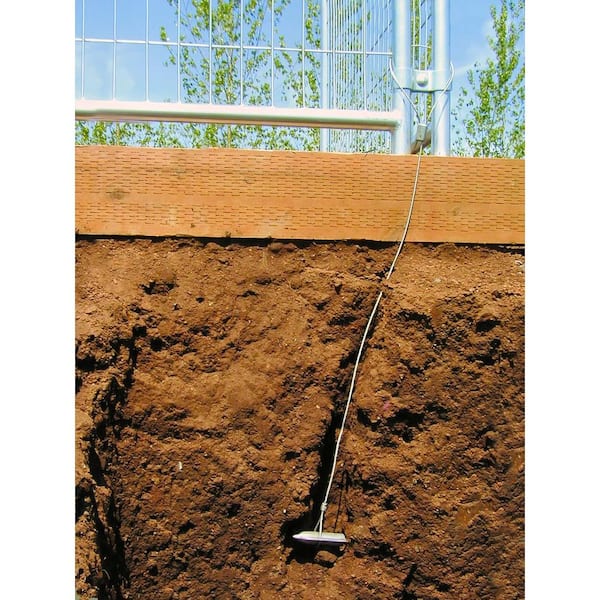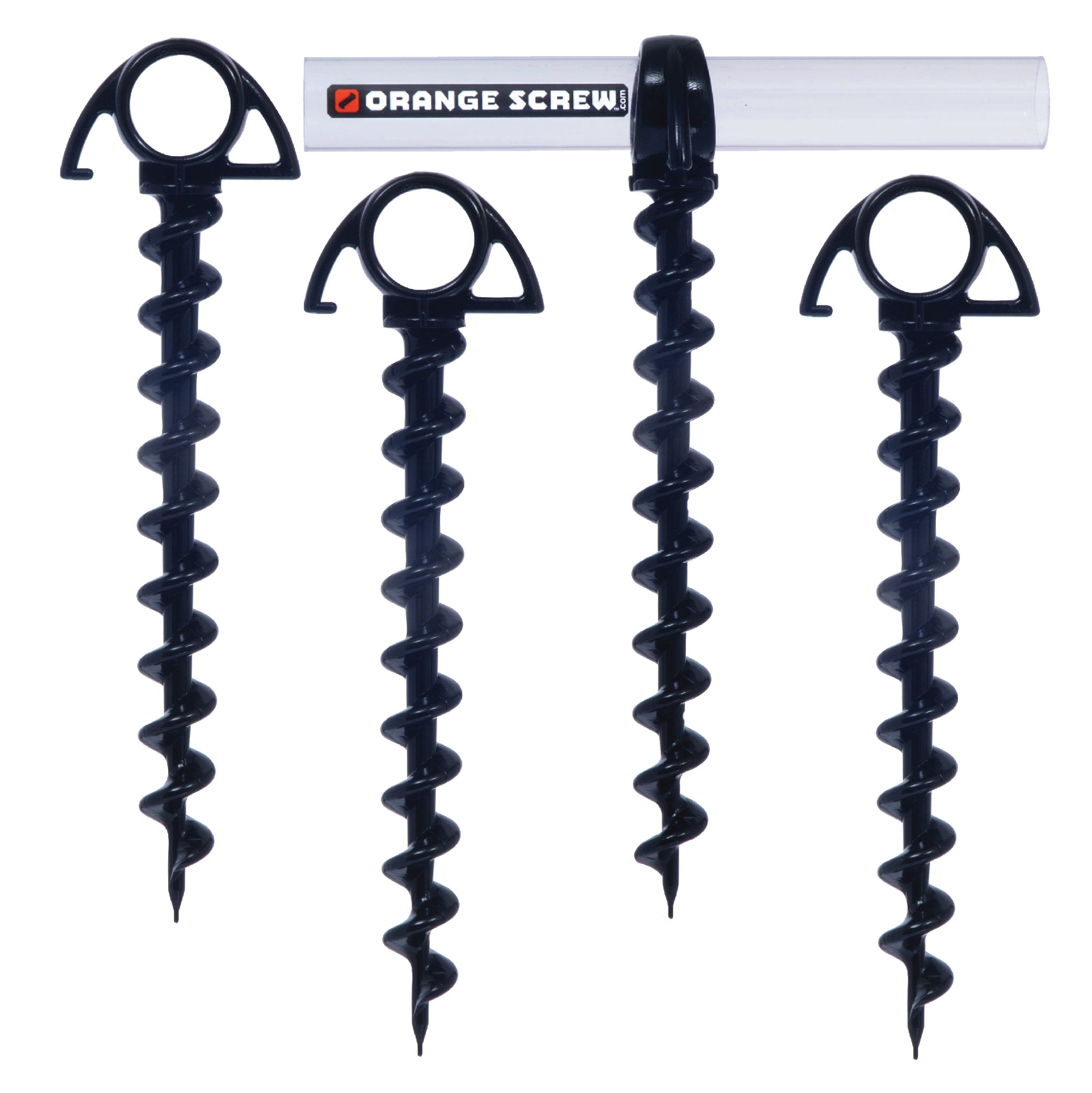Check Out the Various Sorts Of Ground Support for Your Following Project
When starting a building or landscape design job, comprehending the numerous kinds of ground anchors offered is crucial to making certain both security and durability (Ground Anchor). From auger supports, which succeed in diverse soil conditions, to stake supports developed for momentary setups, the options are numerous. Additionally, concrete and screw supports present distinct advantages in certain situations, while deadman anchors are customized for applications requiring resistance to side forces. The selection of a proper support kind can significantly affect the total success of your job, prompting further expedition right into their respective advantages and applications.

Auger Anchors
Auger anchors are a preferred option in various building and landscaping projects because of their unique layout and efficient anchoring capabilities. These anchors are composed of a helical screw-like shaft that is driven right into the ground, permitting a stable and safe hold. The spiral style facilitates simple installment and maximizes resistance against lateral forces, making auger anchors particularly effective in applications such as fencing, temporary frameworks, and erosion control.
The setup process of auger supports is reasonably uncomplicated. They can be manually or mechanically installed, depending upon the size and called for deepness. This flexibility allows for their use in diverse dirt problems, from sandy to clayey terrains. Furthermore, auger anchors can be easily removed and reused, which contributes to their cost-effectiveness and sustainability.
Among the substantial advantages of auger supports is their capacity to disperse lots uniformly throughout the bordering soil, reducing the threat of soil disturbance and minimizing ecological influence. Additionally, they are less susceptible to heaving or loosening up with time compared to standard securing methods. As a result, auger supports are an excellent option for tasks requiring trustworthy and sturdy anchoring solutions.

Stake Anchors
When it comes to securing frameworks in a variety of exterior applications, risk anchors use a straightforward and trusted remedy. These supports are commonly created from sturdy products such as steel or aluminum, designed to hold up against ecological anxieties while supplying ideal security. Their basic layout permits quick installment, making them an optimal choice for temporary or irreversible anchoring needs.
Risk anchors are particularly useful in protecting tents, canopies, and various other lightweight frameworks against wind and weather. They work by being driven into the ground at an angle, producing a solid hold that resists pull-out pressures - Ground Anchor. The performance of stake anchors relies on several elements, including dirt type, moisture content, and the angle of setup
For added protection, several stake anchors feature add-on points for ropes or straps, permitting tension modifications as essential. In applications such as landscaping or construction, they can efficiently support tools or frameworks on irregular surface. In general, stake supports provide a economical and functional option for protecting various exterior installments, making them a recommended selection for professionals and do it yourself enthusiasts alike.
Concrete Anchors
Concrete anchors give a robust remedy for securing frameworks to concrete surface areas, making sure stability and security in numerous applications. These supports are vital for tasks varying from household constructions to massive industrial setups. They come in various kinds, including development supports, glue anchors, and undercut anchors, each made for particular load needs and ecological problems.
Growth supports depend on mechanical systems to grasp the concrete when set up. They are optimal for tool to heavy-duty applications. Adhesive supports use high-strength epoxy or resin to bond the anchor to the concrete, supplying superior load-bearing capacities, especially in cracked concrete scenarios. Undercut supports develop a distinct form within the concrete, giving remarkable holding power, specifically in applications where tensile lots prevail.
When carried out correctly, concrete anchors dramatically boost the structural stability of different jobs, making them vital in modern building and construction methods. Comprehending the specific needs of your job will aid in choosing the appropriate kind of concrete anchor for the job.
Screw Anchors

Screw anchors are a versatile fastening remedy that can be efficiently used in a selection of applications where traditional concrete anchors might not be sufficient. These anchors contain a helical design that permits them to be quickly driven right into the ground, making them suitable for usage in dirt and various other substrates. Their special structure gives excellent holding power and resistance to pull-out forces, making them ideal for many tasks, from landscape design to structural support.
Among the key advantages of screw anchors is their convenience of setup. They require marginal tools and can usually be set up without the need for excavation, which conserves both time and labor expenses. Furthermore, screw supports can be removed and recycled, supplying a sustainable remedy for temporary applications.
Screw anchors are particularly advantageous in locations where dirt problems are testing, such as sandy or loosened soils. Their capability to be installed at varying midsts permits modification based on certain project needs. Overall, screw supports offer a efficient and Learn More reliable securing method, making them an outstanding choice for contractors and designers seeking effective solutions for their tasks.
Deadman Anchors
Deadman anchors act as a durable service for maintaining structures in tough problems, specifically where conventional securing methods might fail. These supports include huge, hefty items buried underground, which create resistance against side forces. The layout usually includes a horizontal part, such as a block of concrete or a metal plate, buried in the dirt, to which bands or cords are connected.
The efficiency of deadman supports exists in their ability to distribute lots over a larger area, minimizing the risk of failing in unstable dirt problems. They are specifically advantageous in applications such as maintaining walls, short-lived structures, and slope stabilization, where soil activity can compromise the stability of the structure.
Installment of deadman supports calls for mindful preparation to ensure they are placed at the appropriate deepness and orientation, optimizing their load-bearing ability. While they might require even more labor and product than light-weight anchors, their integrity in unfavorable conditions makes them important for long-term tasks. Deadman supports are flexible and can be adapted to different applications, making them a go-to option for engineers dealing with special challenges in their projects.
Verdict
In summary, selecting the ideal sort of ground anchor is essential for guaranteeing stability and protection in various tasks. Auger supports master diverse soil problems, while stake anchors fit temporary applications. For concrete surfaces, development and adhesive anchors provide dependable alternatives, and screw supports provide versatility in challenging terrains. Deadman anchors are especially efficient in resisting side pressures for maintaining wall surfaces. More Help Careful consideration of these choices will enhance project results and architectural honesty.
Additionally, concrete and screw supports existing distinct advantages in certain scenarios, while deadman anchors are tailored for applications needing resistance to side pressures - Ground Anchor.Auger supports are a popular option in numerous building and construction and landscape design projects due to their special layout and reliable anchoring abilities. They come in various kinds, consisting of expansion anchors, glue supports, and undercut supports, each designed for certain tons needs and environmental conditions
Adhesive anchors utilize high-strength epoxy or material to bond the support to More Info the concrete, offering premium load-bearing capabilities, especially in split concrete situations. Overall, screw supports provide a efficient and reliable securing method, making them an excellent selection for professionals and designers seeking efficient services for their tasks.